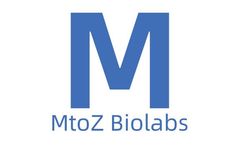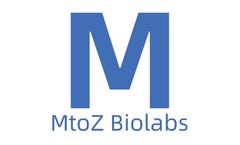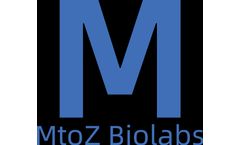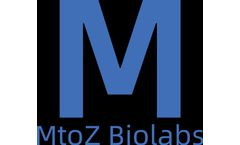Refine by
Gene Mutation And Expression Articles & Analysis: Older
189 articles found
In the quest to unravel the complexities of infectious diseases, understanding the intricate interplay between pathogens and their hosts is paramount. This requires a comprehensive analysis of gene expression and the regulatory mechanisms at play during infection. Traditional RNA sequencing (RNA-seq) has long been employed to investigate the gene expression profiles of microbial pathogens. ...
Introduction Microarray printing technology has revolutionized the field of genomics and proteomics, and its application in glycobiology is no exception. Glycobiology, the study of carbohydrates and their biological functions, relies heavily on the ability to analyze large-scale carbohydrate interactions. Microarray printing in glycobiology enables the precise and high-throughput analysis of ...
Degradome sequencing, also known as parallel analysis of RNA ends (PARE) sequencing, is a cutting-edge technique that leverages high-throughput sequencing and bioinformatics to investigate the degradation products of mRNA. This method is particularly valuable for identifying the target genes regulated by microRNAs (miRNAs), which are small, endogenous non-coding RNAs approximately 22 nucleotides ...
MicroRNAs (miRNAs) are small, non-coding RNA molecules that play a crucial role in the regulation of gene expression. Their ability to modulate various biological processes makes them significant players in the field of molecular biology and medicine. Among the various tools utilized in research and therapeutic applications, miRNA mimics have emerged as powerful instruments for manipulating and ...
Reporter stable cell lines are invaluable tools in molecular biology and biochemistry. By integrating a reporter gene into the genome of a cell, researchers can create a stable cell line that emits a measurable signal in response to specific stimuli or conditions. This technology has revolutionized various fields, including drug discovery, gene expression studies, and cellular signaling research. ...
HCEC-12 is a well-established human corneal epithelial cell line derived from human corneal tissue. It plays a crucial role in ocular research, particularly for studies related to corneal physiology, wound healing, and the pathogenesis of various ocular diseases. This article delves into the characteristics, applications, and significance of the HCEC-12 cell line in biological and medical ...
These tools, with their capacity for targeted genome editing, serve as invaluable conduits for generating customized zebrafish models that elucidate complex gene functions and interactions. CRISPR/Cas9 in particular, stands as a groundbreaking technique in this arena. ...
By introducing a functional gene into the cells with these symptoms, researchers hope to correct the inherited gene mutation and potentially cure the disease. ...
Collagen is a crucial structural protein, widely presenting in human skin, bones, tendons, ligaments, and other tissues. It's essential for maintaining the structural integrity and function of tissues. The measurement of collagen can help researchers and physicians understand the pathological process of related diseases (such as osteoporosis, arthritis, skin aging etc.), and also aid in drug ...
In epigenomics experiments, the use of parallel samples is to ensure the reliability and repeatability of experimental results. The choice of the number of parallel samples depends on various factors, including experimental design, expected variability, data analysis methods, etc. Here are some specific examples to illustrate the selection of the number of parallel samples in different ...
Acetylation detection of a specific protein is a method used to determine whether and where acetylation modifications have occurred on a protein. Acetylation is a common post-translational modification of proteins, typically occurring on lysine residues of proteins, and plays a crucial role in regulating protein function, cell signaling, gene expression, and disease onset. For instance, the ...
When a ribosome is affixed to the polypeptide (protein) it is making, the ribosome-nascent chain complex (RNC) is the compilation of molecules that make up the ribosome. One of several methods can be used to halt the synthesis of the nascent polypeptide. RNCs are made and purified in labs to study the dynamics, biochemistry, folding, and interactions that the ribosome and proteins undergoing ...
In the world of biotechnology and cell biology, the immortalization of primary cells has long been a challenge. Traditional methods often fall short when trying to establish immortal cell lines from certain species, such as chickens, monkeys, dogs, and even human T cells. However, with the innovative Epigenetic Induction of Cell Growth service offered by Creative Bioarray, a breakthrough in cell ...
Cell cultures have played a significant role in the academy and pharmaceutical industry, but conventional 2D cultures fail to provide physiological relevance and communication network as compared to in vivo conditions, since they are unable to mimic the complexity of cellular microenvironment, an essential part for the cell behavior and systematic investigation. Using 2D cell culture systems can ...
Researchers have long been striving to identify antibodies that can combat pathogenic microorganisms. However, traditional methods of antibody discovery require substantial time and effort and often fail to identify the most effective antibodies. In recent years, the advancement of single-cell sequencing technologies has offered a new possibility for the screening of antibodies.What is ...
Ribonucleases (RNases) represent a critical class of enzymes with a principal role in the degradation of RNA, crucial for maintaining cellular homeostasis and regulating gene expression. By cleaving RNA molecules, RNases are integral to numerous biological processes, ranging from RNA maturation to the innate immune response against RNA viruses. In this exploration, we delve into the multifaceted ...
Single-Cell RNA Sequencing (scRNA-seq): This powerful technology enables the examination of gene expression at the single-cell level. In brain tumors, scRNA-seq can reveal the diversity of cell types within a tumor, identifying which cells contribute to malignancy and which may respond to specific treatments. ...
What is Gene Knockout Technology?Gene knockout (Gene Knockout) is a molecular biology technique that allows researchers to block or shut off the function of a specific gene to study its role and importance. This technique is achieved by introducing mutations into the gene, making it impossible ...
Recombinant Type III Collagen is a type of collagen protein produced through biotechnological methods. In nature, collagen is a vital structural protein, widely present in the skin, bones, tendons, and other connective tissues of humans and animals. Type III collagen is particularly common in newly formed connective tissues and rapidly growing tissues, such as during the wound healing process.The ...
Sugar nucleotides are key molecules in the biosynthesis of glycans, which are carbohydrate chains found on the surface of cells or in the bloodstream. These molecules play a critical role in a wide range of biological processes, including cell signaling, protein folding, and immune responses. In this article, we will delve into the structure and synthesis of sugar nucleotides, and explore their ...













